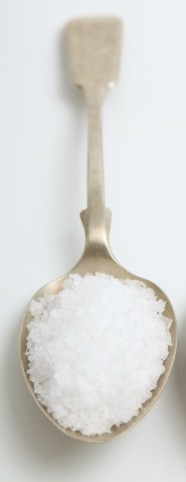 When it comes to a healthy diet, everyone has a slightly different approach. Many people focus on cutting high-fat foods. Others feel best when they reduce their intake of simple carbohydrates. Those who want to drop pounds count their calories. There is another aspect of a healthy diet, however, that most of us overlook. It is the amount of salt we consume, and it is critical to good health.
When it comes to a healthy diet, everyone has a slightly different approach. Many people focus on cutting high-fat foods. Others feel best when they reduce their intake of simple carbohydrates. Those who want to drop pounds count their calories. There is another aspect of a healthy diet, however, that most of us overlook. It is the amount of salt we consume, and it is critical to good health.
Salt: Friend or Foe?
Salt is made up of sodium, a mineral that is essential to a healthy body. Sodium helps maintain the right balance of fluids transmits nerve impulses and influences the contraction and relaxation of muscles. The kidneys regulate sodium levels in your body. Sometimes, however, the kidneys accumulate more sodium than they are able to excrete as urine. Because sodium retains water, the volume of blood in your body increases, making the heart work harder to pump the blood. This puts added pressure on the arteries and causes the numbers on your blood pressure reading to rise.
Why is it that some people can eat as much salty food as they like and still have normal blood pressure? It turns out that some people are more sensitive to salt than others. If you are sensitive, your body tends to retain sodium causing water retention and increased blood pressure. The good news is that reducing your sodium intake will decrease pressure on your arteries and make an impact on your blood pressure numbers.
The official recommendation for salt intake from the medical community is actually a range: 1,500 to 2,400 mg per day. If heart disease runs in your family, you are battling high blood pressure or you are over the age of 50, you should aim for the lower end of the range. For everyone reading this, staying under 2,400 mg per day will help lower your risk for health problems and keep your kidneys functioning optimally.
Finding the Hidden Salt
Unfortunately, lowering sodium intake is not as simple as staying away from the salt shaker at the dinner table. Only 11 percent of the sodium most people consume comes from salt added while eating or cooking. A whopping 77 percent actually comes from prepared or processed foods. For example, a serving of deli turkey contains 630 mg of sodium; a serving of canned, low-calorie vegetable soup contains 820 mg; and half a cup of lowfat cottage cheese contains 460 mg. All these foods are perceived to be healthy, yet are high in sodium.
To find the hidden salt, start reading nutrition labels. The amount of sodium in milligrams for each serving is always listed. Also notice the serving size. If a can of soup contains 2 servings, you are actually eating twice the amount of sodium on the label if you eat the whole can. An even simpler rule of thumb is this: processed foods are often high in sodium. Manufacturers use various forms of sodium to improve taste and texture, and give the food a longer shelf life. Many frozen meals are high in sodium for this reason.
How to Cut Sodium in Your Diet
Managing sodium intake is essential to a healthy heart and kidneys as we age. Follow these tips to reduce your sodium intake, and you will reduce your risk of high blood pressure, improve the quality of your diet and avoid excess water retention and bloating. This is one diet change we can all benefit from!
1) Eat Natural – Skip processed and prepared foods in favor of meats, vegetables and grains in their natural state. Prepare your meals at home so you can regulate salt content.
2) Add Flavor the Healthy Way – Herbs and spices are delicious, calorie-free ways to flavor food without any added salt.
3) Shop Smart – Many companies make low-sodium versions of your favorite foods. Lunch meat, cheese and prepared products from natural foods companies can help fill the gaps when you embark on a low-sodium diet.
4) Watch Out for Condiments – Many of us know that soy sauce is high in sodium, but ketchup, mustard, relish, dips and salad dressings are often loaded with it. Pay attention to portions, look for low-sodium versions, and if you use a high-sodium condiment, don’t add additional salt.
5) Cook Smart – When following a recipe, salt the food at the end, rather than throughout the cooking process. You may find that you don’t need any additional salt.
Stay Well,
Mark Rosenberg, M.D.
